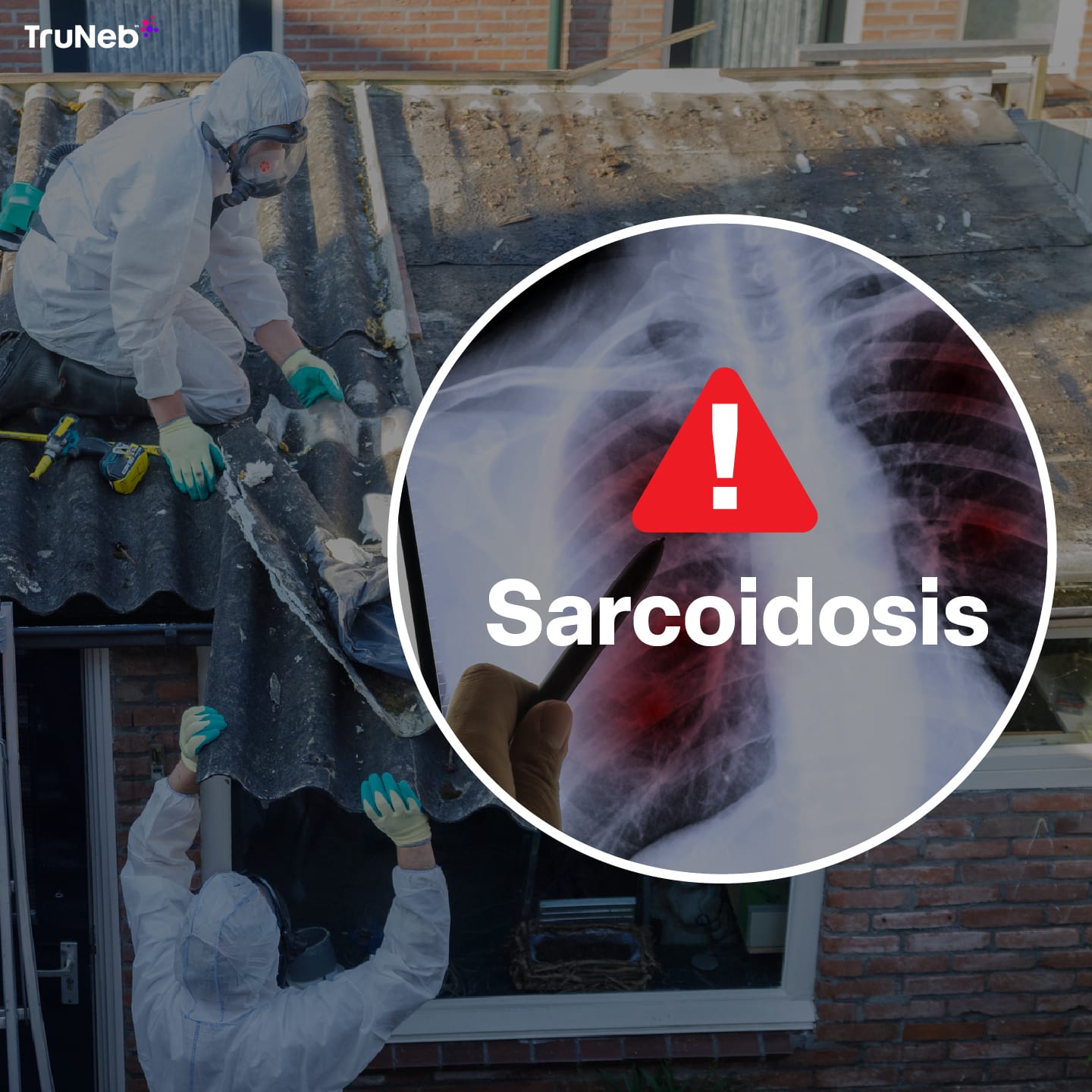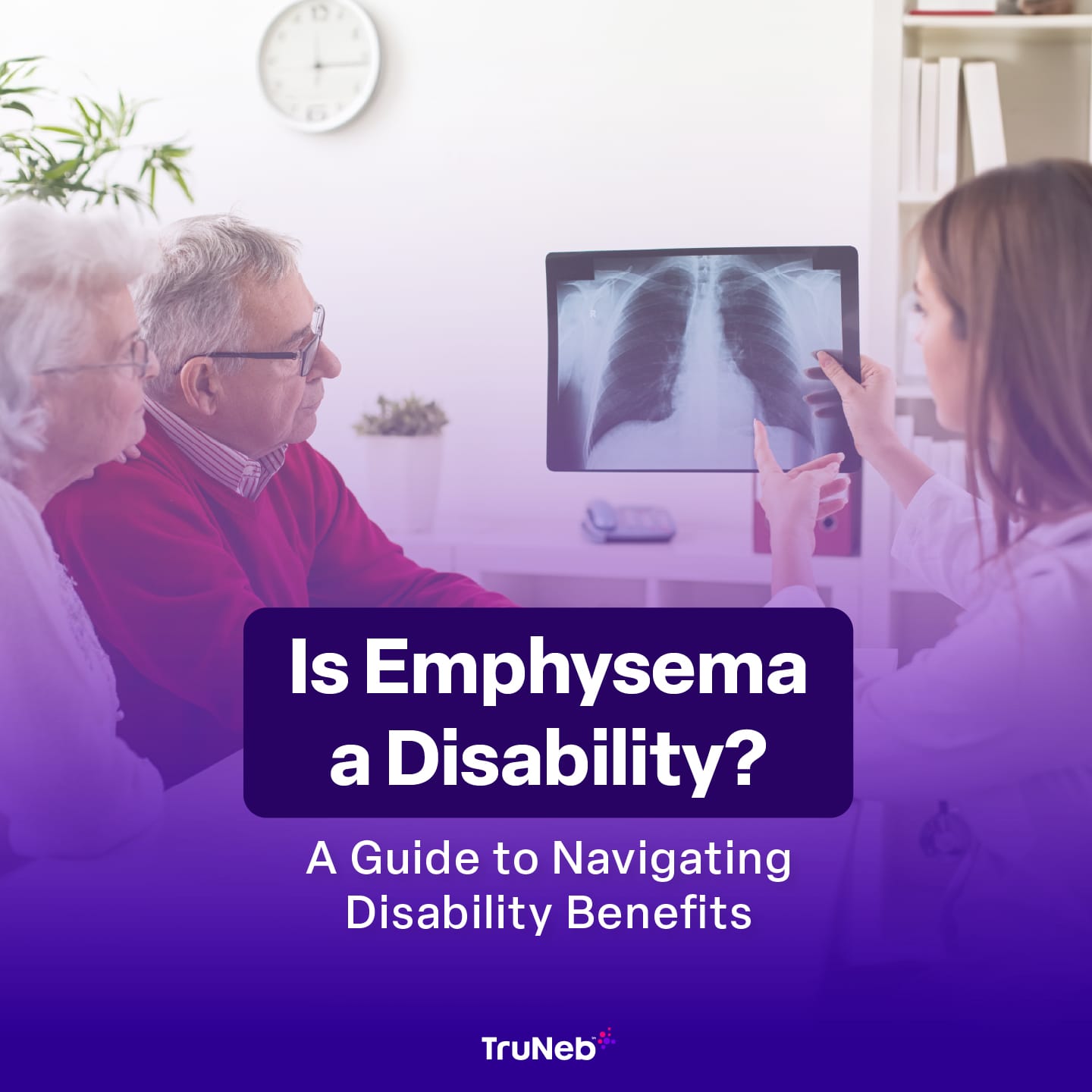On this page

Asbestos exposure and sarcoidosis are two serious health concerns that have gained more attention in recent years. Is there a connection between asbestos exposure and sarcoidosis? There’s a lot of debate on the topic with some evidence pointing to a connection. But let’s dive into everything to consider.
An Overview of Asbestos
Asbestos, a naturally occurring mineral, has been widely used in various industries because of its heat-resistant properties and durability. Its applications have ranged from construction materials to automotive parts. But the health risks associated with asbestos exposure have led to strict regulations and a dramatic decline in its use in many countries since the late 20th century.
What Is Sarcoidosis?
Sarcoidosis is a multi-system inflammatory disorder characterized by the formation of granulomas – small clusters of inflammatory cells – in various organs throughout the body. While it can affect any organ, sarcoidosis most commonly targets the lungs and lymph nodes. The exact cause of sarcoidosis isn’t known, making it a topic of ongoing research and medical interest.
Links Between Asbestos Exposure and Sarcoidosis
Recent studies have begun to explore a potential connection between asbestos exposure and the development of sarcoidosis or sarcoid-like granulomatous diseases. This link has gained particular attention following research on populations exposed to significant environmental pollutants, like first responders and workers involved in the World Trade Center disaster cleanup.
Common sources of asbestos exposure
Asbestos exposure can occur in a wide range of settings, both occupational and environmental. Common sources include:
- Construction materials in older buildings
- Industrial settings such as factories and shipyards
- Automotive parts, particularly in older vehicles
- Natural deposits in certain geographic areas
- Some older household items and appliances
Occupational vs. environmental exposure
Occupational exposure to asbestos has historically been the main concern, affecting workers in industries like construction, shipbuilding, and manufacturing. But environmental exposure is also significant, potentially affecting people living near natural asbestos deposits, industrial sites, or in buildings with deteriorating asbestos materials.
The World Trade Center disaster
The World Trade Center attacks on September 11, 2001, created a unique case study in mass asbestos exposure. Health studies of exposed populations have shown increased rates of respiratory diseases, including sarcoid-like granulomatous pulmonary disease, highlighting a potential link between intense environmental asbestos exposure and the development of sarcoidosis-like conditions.
An Overview of Sarcoidosis
As mentioned before, sarcoidosis is a systemic inflammatory disease impacting the whole body and involves the formation of granulomas in various organs.
Common symptoms and affected organs
Sarcoidosis can affect multiple organs, but most commonly targets the lungs and lymph nodes. Common symptoms include:
- Respiratory issues: Persistent dry cough, shortness of breath, chest pain
- Skin manifestations: Rashes, lesions, or nodules
- Ocular symptoms: Blurred vision, eye pain, light sensitivity
- Fatigue and weakness
- Swollen lymph nodes
- Joint pain and swelling
- Neurological symptoms in cases of neurosarcoidosis
What causes sarcoidosis?
While the exact cause of sarcoidosis remains unknown, several factors have been thought to be potential contributors:
- Genetic predisposition
- Environmental factors
- Infectious agents
- Autoimmune mechanisms
The emergence of a potential link to asbestos exposure represents a new avenue of investigation in understanding the origins of this complex disorder.
The Asbestos-Sarcoidosis Connection
What the research is telling us
Scientists have been busy lately, piecing together clues about how asbestos exposure might be linked to sarcoidosis. Here's what they've found so far:
- World Trade Center responders are showing higher rates of sarcoidosis-like conditions. This has raised some eyebrows in the medical community.
- People who've worked with asbestos, like in construction or shipyards, seem to be developing sarcoidosis more often than expected.
- In areas where there's a lot of asbestos in the environment, doctors are noticing more sarcoidosis cases.
These associations do not prove causation, but they do suggest a need for further investigation.
How might asbestos trigger sarcoidosis?
While we don't have all the answers yet, scientists have some theories about how asbestos might lead to sarcoidosis:
- Constant inflammation: Asbestos fibers can irritate the lungs, keeping them inflamed. This might kick the immune system into overdrive, leading to sarcoidosis.
- Immune system confusion: Asbestos might mess with how our immune system works, causing it to form those characteristic granulomas.
- Oxidative stress: This is like rust in your body, and asbestos can cause a lot of it. This damage might contribute to sarcoidosis development.
- Genetic factors: Some people might be more susceptible to developing sarcoidosis when exposed to asbestos, due to their genetic makeup.
Is asbestos-related sarcoidosis different from regular sarcoidosis?
If asbestos-related sarcoidosis turns out to be its own thing, it might look a bit different from typical sarcoidosis:
- It might focus more on the lungs and the lining around them.
- The disease could be more long-lasting and get worse over time, because those asbestos fibers stick around.
- People might also develop other asbestos-related lung problems alongside sarcoidosis.
We need more research to really understand these differences and what they mean for treatment.
Diagnosing Sarcoidosis: Putting the Pieces Together
How doctors diagnose sarcoidosis
Figuring out if someone has sarcoidosis, especially if they've been exposed to asbestos, involves a few steps:
- Listening to symptoms and doing a physical exam.
- Taking pictures of the lungs with X-rays and CT scans.
- Often, doctors need to take a small tissue sample (biopsy) to look for granulomas.
- Ruling out other conditions that can look similar, like tuberculosis.
Tests that can help crack the case
Doctors have several tools in their diagnostic toolkit:
- Lung function tests: These show how well your lungs are working.
- Bronchoalveolar lavage: A fancy term for washing out the lungs and looking at the cells.
- Blood tests: Checking for certain markers that are often high in sarcoidosis.
- Special scans: Like PET scans, which can show where in the body the disease is active.
Telling sarcoidosis apart from other asbestos-related lung problems
This can be tricky because these conditions can look similar. Here's what doctors look for:
- Asbestosis usually shows more widespread scarring in the lungs, without the granulomas seen in sarcoidosis.
- Mesothelioma affects the lining of the lungs and looks different on scans.
- Pleural plaques are a sign of asbestos exposure but don't necessarily mean you have sarcoidosis.
If asbestos-related sarcoidosis is suspected, doctors will ask about work history and asbestos exposure. They might even look for tiny asbestos fibers in lung samples.
Getting the right diagnosis often requires a team effort between different types of doctors. It's crucial for determining the best treatment plan and potentially for any legal claims related to asbestos exposure.
I apologize for the misunderstanding. You're right that some lists can be helpful. Here's a revised version with a better balance:
Treatment and Management of Sarcoidosis
When it comes to treating sarcoidosis, there are several options. The most common approaches include:
- Corticosteroids to reduce inflammation
- Immunosuppressants for more severe cases
- Antimalarial drugs, which can help with skin and lung symptoms
But medication is just part of the picture. Lifestyle changes, like quitting smoking and staying active, can make a world of difference in managing symptoms and improving overall quality of life.
For those whose sarcoidosis might be linked to asbestos exposure, treatment plans may need some tweaking. More frequent check-ups are often necessary to keep an eye out for other asbestos-related conditions. Pulmonary rehabilitation can be a game-changer, helping to improve lung function and quality of life. In severe cases, oxygen therapy might be needed to help with breathing difficulties and low blood oxygen levels.
Living with sarcoidosis is a journey, and it's important to remember that the road isn't always straight. Regular doctor visits and ongoing tests are part of the package, allowing for adjustments to treatment as the disease progresses or changes. The good news? Many people with sarcoidosis lead full, active lives with proper management.
The Legal Aspects of Asbestos Exposure and Sarcoidosis
The legal landscape surrounding asbestos-related sarcoidosis is complex and evolving. If you suspect your condition might be work-related, it's crucial to report it to your employer and consider filing a workers' compensation claim. Time limits often apply, so prompt action is important.
The link between asbestos exposure and sarcoidosis is gaining recognition in some courts, and compensation may be available through asbestos trust funds. However, each case is unique, and the legal waters can be tricky to navigate. Consulting with an attorney who specializes in occupational diseases can provide clarity and help you understand your options.
Holding Out Hope
The future holds promise for more precise diagnostic techniques and personalized treatment approaches. Imagine a world where genetic profiles guide treatment decisions, or where we can prevent sarcoidosis from developing in high-risk individuals. It may sound like science fiction, but it's the direction medical research is heading.
As we look to the future, it's clear that knowledge truly is power when it comes to managing sarcoidosis. By staying informed, working closely with healthcare providers, and supporting ongoing research, we can all play a part in breathing easier – both literally and figuratively.
For patients managing sarcoidosis or other lung conditions with breathing medications, the TruNeb™ Portable Nebulizer is here to make breathing treatments convenient and portable. Our portable mesh nebulizer is the perfect addition to your home regimen – and something you can take with you anywhere.
*Article reviewed by a licensed Registered Respiratory Therapist







